Telehealth vs. Telemedicine Software Solutions: Decoding the Differences
While the modern healthcare industry evolves at a rapid pace, the integration of technology into patient care practices also becomes more popular. As the two fundamental principles that shape the healthcare software development domain, telehealth and telemedicine play a pivotal role in the tech-powered healthcare realm, bringing the latest innovation trends to the table. However, what is the difference between telehealth vs. telemedicine? There is no doubt that understanding the subtle yet significant distinctions between telehealth vs. telemedicine software solutions is of paramount importance when it comes to choosing the best fit for your healthcare needs. So let us dive deeper into this fascinating controversy to select the winner: telehealth vs. telemedicine?

- Back to the Basics: Telehealth vs. Telemedicine
- Summing Up Telehealth vs. Telemedicine: The Key Differences
- The Current State of Telehealth vs. Telemedicine Software Market
- Telehealth vs. Telemedicine: Common Benefits You Should Consider in 2025 and Beyond
- Telehealth vs. Telemedicine: On the Bottom Line
Back to the Basics: Telehealth vs. Telemedicine
Although telehealth and telemedicine are often used interchangeably, these concepts encompass distinct aspects. Let us take a closer look at each of them to find out the grain of truth.
Telehealth: Meaning, Examples, and More
Definition of Telehealth:
Speaking of telehealth vs. telemedicine, the first is a broader term, covering various health services delivered remotely, including non-clinical aspects such as health education, remote patient monitoring, and general health advice. In simple words, telehealth enables healthcare practitioners to care for their patients without in-person hospital visits. The only thing patients need to access telehealth is a stable internet connection on their laptop, PC, tablet, or smartphone. Telehealth is also associated with the term "mHealth," which stands for the use of mobile phones in healthcare. During the global pandemic of coronavirus, telehealth has emerged as an essential modality for patients in the US and Europe.
Examples of Telehealth:
Since telehealth is a broad term that hosts a wide array of services under one roof, we have prepared several representative examples. Please note that telehealth also includes all telemedicine examples (listed above).
- delivering exam notes/medical history/X-rays to healthcare specialists;
- online medical education lectures;
- team meetings between healthcare professionals;
- health tracking app;
- disease notification or general health information app.
Telehealth Technologies:
- videoconferencing;
- the internet;
- store-and-forward imaging;
- streaming media;
- terrestrial and wireless communications.

Telemedicine: Meaning, Examples, and More
Definition of Telemedicine:
Returning to the core difference between telehealth and telemedicine, telemedicine focuses only on delivering clinical care, while telehealth also covers services beyond just online doctor's visits, like administrative procedures in healthcare facilities. As an inseparable subtype of telehealth, telemedicine provides real-time communication between a patient and a healthcare practitioner.
Examples of Telemedicine:
As we have already sorted out, telemedicine mainly refers to clinical services, so here are several examples of telemedicine:
- physical therapy;
- eye exams;
- mental health counseling;
- medication prescriptions;
- medication refills.
Telemedicine Technologies:
- videoconferencing;
- the internet;
- patient portals.
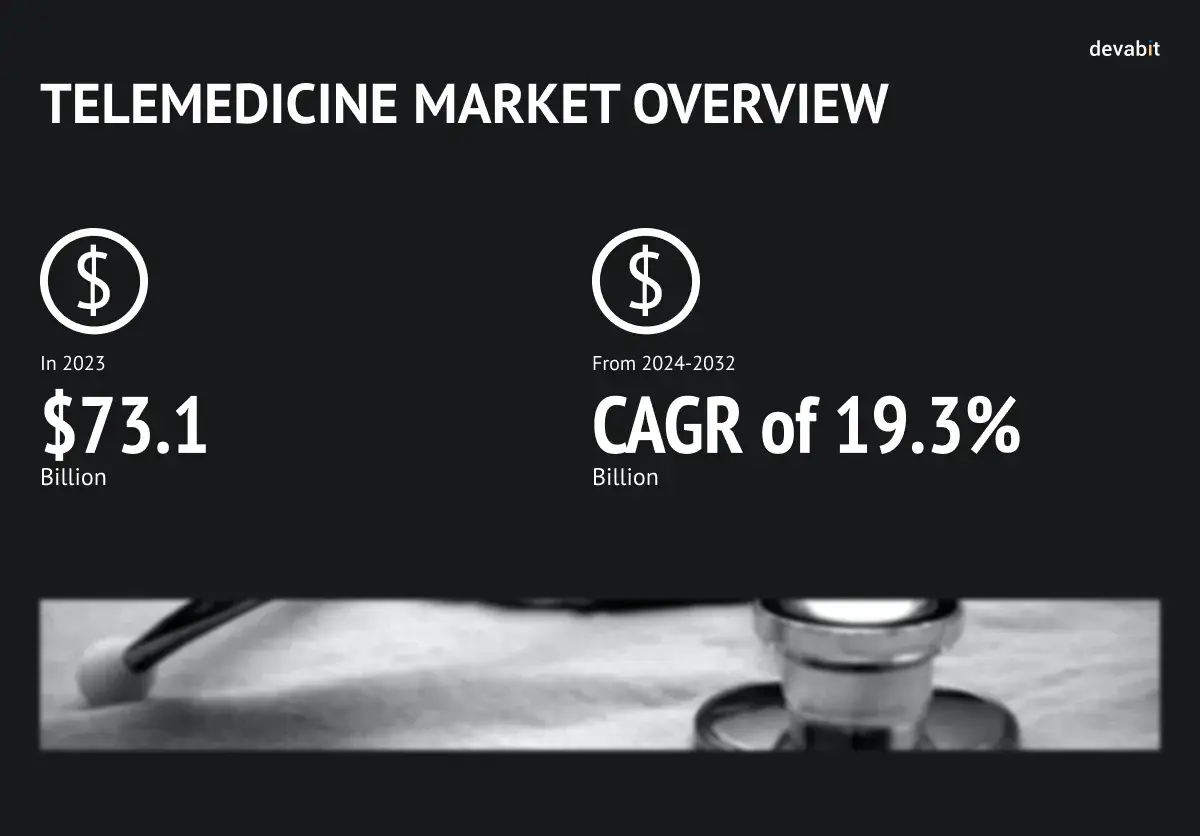
Summing Up Telehealth vs. Telemedicine: The Key Differences
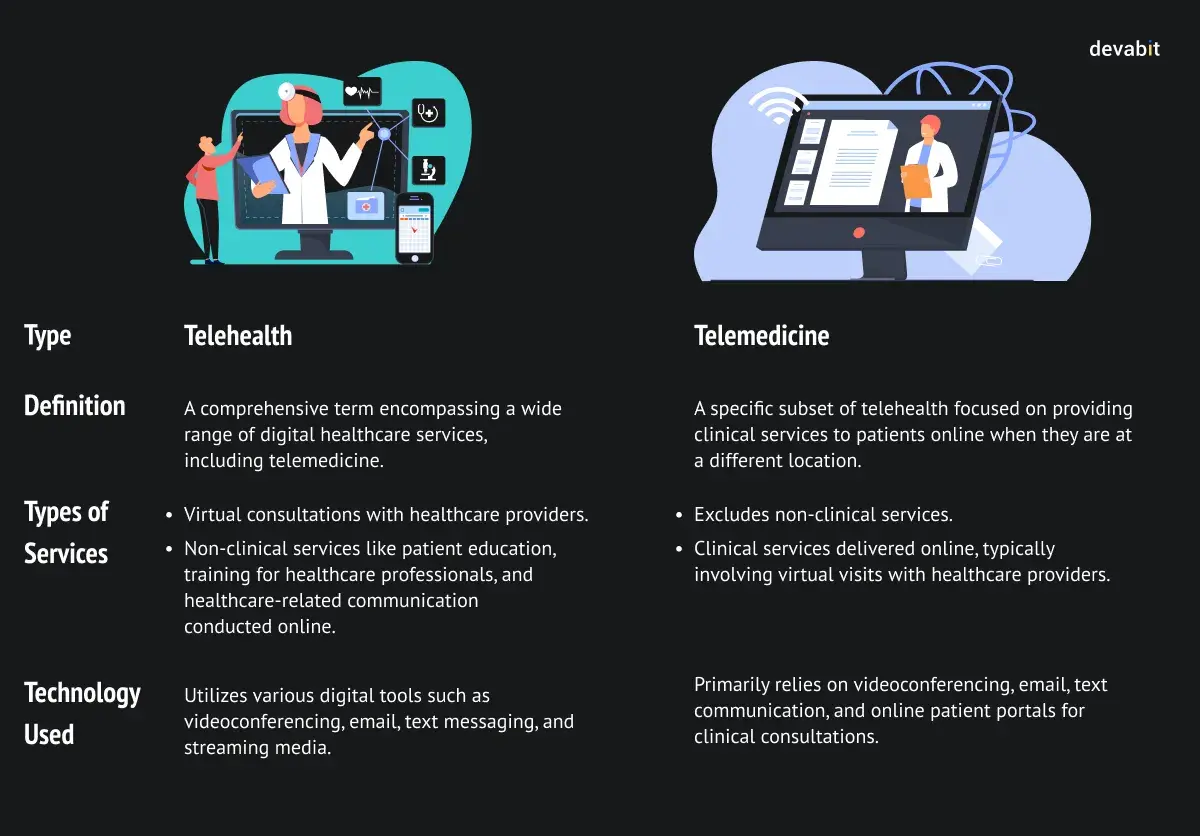
The Current State of Telehealth vs. Telemedicine Software Market
In the following paragraphs, we will analyze the key economic, social, and industrial factors influencing the growth and expansion of the telehealth vs. telemedicine software market.
How Global Pandemics Shape the Way We Perceive Digital Healthcare Solutions
The use of telehealth and telemedicine rapidly increased during the onset of the COVID-19 pandemic and continues to influence healthcare services. According to the study by the ASPE Office of Healthcare Policy, coronavirus caused "a steady use of telehealth with a slightly higher proportion of video-based versus audio-only services by March 2022; however, disparities persist in populations and across insurance types." One year later, on grounds of the rapidly emerging popularity of vaccination initiated by the government, we have witnessed the incremental rehabilitation of in-person medical care. However, telehealth and telemedicine have remained popular since they offer a hybrid approach to patient care that lies in the combination of virtual and in-person visits. Still, when the pandemic was finally over, patients continued to benefit from the convenience and efficiency of telemedicine and telehealth, forcing the ongoing demand for digitalized care.
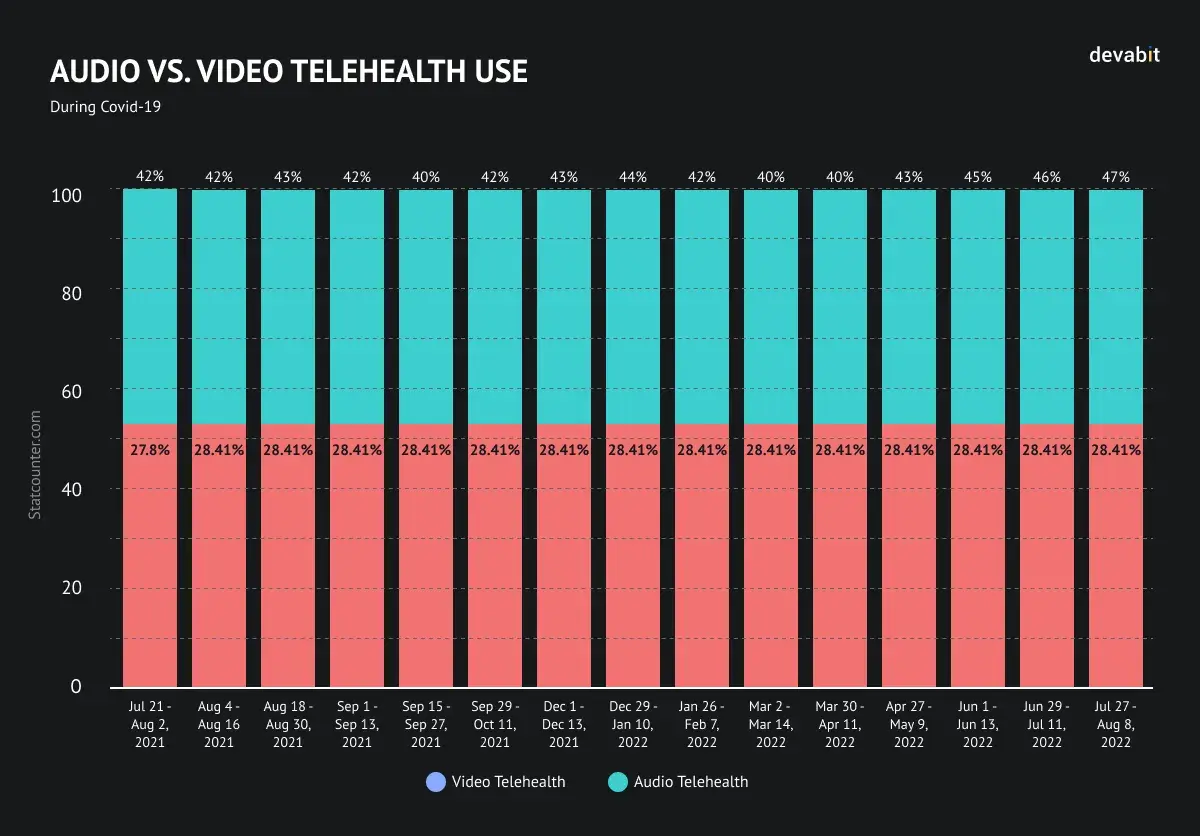
Telemedicine vs. Telehealth Software Market Overview
As reported by FIMI Market Insights, the telemedicine and telehealth software market is expected to grow by 15.7% (CAGR) during the following decade. Yet, what are the reasons for such a positive tendency? Let us try to figure it out together. With the emergence of real-time communication software, remote patient monitoring software, and store and forward telehealth software, the demand for telehealth and telemedicine increased. At the same time, mHealth solutions, wireless technology, smart health devices, Artificial Intelligence (AI), Machine Learning (ML), the Internet of Medical Things (IoMT), and Big Data have also contributed to the evolution of the telehealth and telemedicine software market.

Features & Capabilities of Telehealth vs. Telemedicine Software Solutions
Though telehealth and telemedicine are pretty similar, telehealth vs. telemedicine software solutions offer different services. By way of illustration, telehealth software provides a wide range of services, including remote patient monitoring, secure video conferencing for consultations, and dissemination of health information. Meanwhile, telemedicine software facilitates remote clinical consultations, diagnosis, and subsequent treatment plans.

Telemedicine & Telehealth Categories: 3 General Types of Software Solutions
Telemedicine and teleheallth software solutions are usually categorized into three main classes: remote patient monitoring, store-and-forward, and real-time interactions. Let us take a more detailed look at each of them:
1. Remote Patient Monitoring
Also known as "home telemedicine," remote patient monitoring software enables healthcare practitioners to control and track patients' health conditions from the comfort of their homes thanks to various medical devices. On the flip side, patients typically utilize these devices to monitor vital signs, keep track of glucose levels, or relay their overall well-being. This form of telemedicine is popular among individuals coping with chronic illnesses or post-hospitalization. In this way, physicians can regularly check in with their patients, identify potential health issues early on, and reduce patient risk. For many, especially the elderly or those recovering from significant injuries or illnesses, visiting a doctor's office can be pretty challenging, so remote patient monitoring is a great option to overcome this issue.
2. Store-and-Forward Telemedicine
As a widely-known technology adopted globally, store-and-forward telemedicine solutions enable patients and healthcare providers to transmit medical data, such as images, vital sign information, and recorded patient videos, to other medical professionals for additional diagnosis or consultation. For instance, a primary care provider identifying a skin abnormality may use this method to securely send relevant patient information, including images and the patient's electronic record, to a dermatologist for evaluation. This approach significantly streamlines healthcare, especially in regions with limited healthcare facilities.
3. Real-Time Telemedicine
In contrast to store-and-forward and remote patient monitoring solutions, real-time telemedicine provides next-gen interaction between the patient and healthcare provider. This could involve a phone call, chatroom, or live video conference where both parties communicate in real-time. Real-time telemedicine, while requiring synchronization between patient and physician schedules, closely mimics an in-person visit. It allows the physician to assess the patient using history, live video, and the patient's input to provide remote treatment. Some real-time telemedicine software integrates mobile medical devices to capture vital signs, substituting the need for a physical examination.
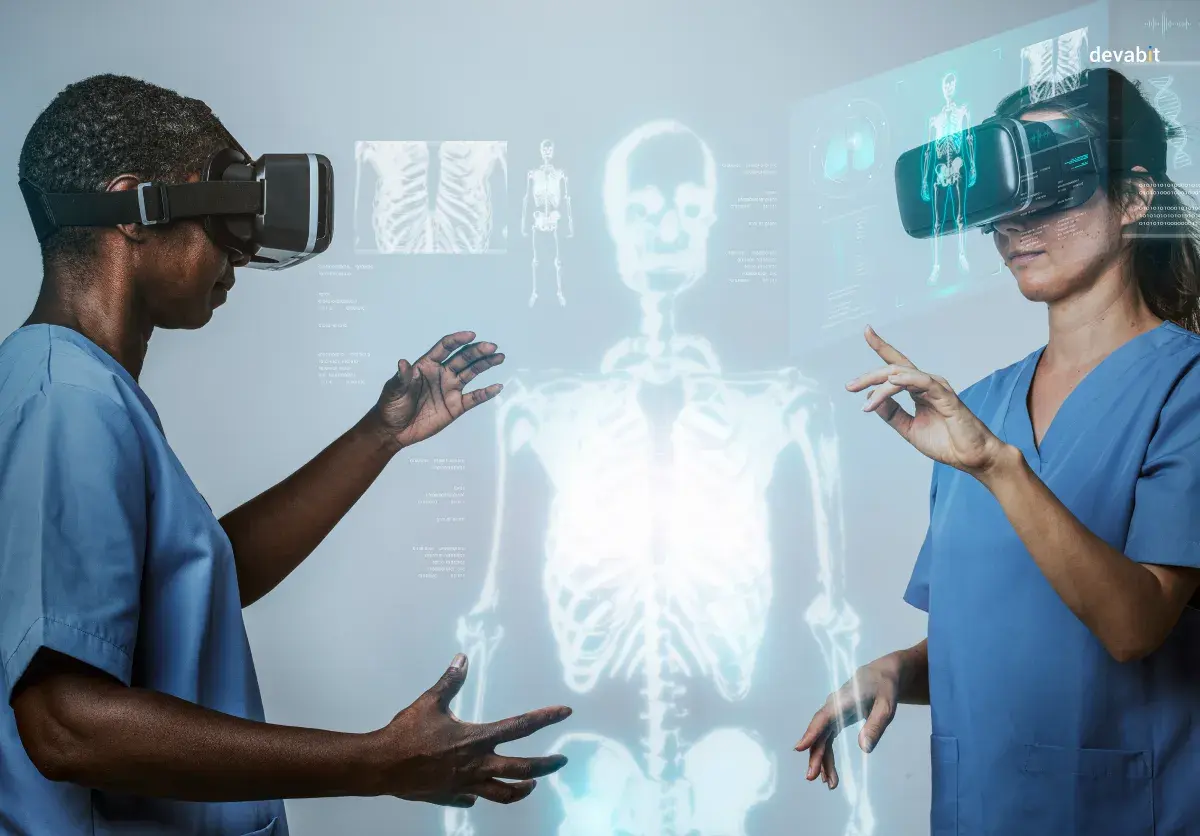
Telehealth vs. Telemedicine: Common Benefits You Should Consider in 2025 and Beyond
Accessibility & Convenience
Initially designed to ensure convenient access for routine consultations and basic health monitoring, telehealth solutions offer next-gen accessibility through various devices, including smartphones, tablets, or computers. Accordingly, this outstanding feature eliminates the demographical borders, making telehealth a viable option for healthcare practitioners and patients from all over the world. Telemedicine, on the other hand, might require specific software or platforms, making it slightly less convenient. Luckily, our healthcare development company is proficient in creating both telemedicine and telehealth solutions regardless of the complex features.
Integration & Compatibility
In a nutshell, telehealth and telemedicine integrate seamlessly with existing healthcare systems. Yet, due to the broad nature of telehealth services, this type of software solution is often more versatile in its compatibility with different devices and platforms, ensuring a wider reach. Telemedicine, however, might require more tailored solutions, depending on specific medical systems or institutions. Fortunately, the need for customization is not a problem when you cooperate with a creative team like devabit.

Regulatory & Legal Considerations
It is not a secret that navigating legal and regulatory frameworks is crucial for both telehealth and telemedicine since these healthcare software solutions must comply with privacy laws and other healthcare regulations. Although these regulations might vary across different regions or countries, our team deals with all types of regulatory requirements, so we always consider these aspects to ensure we deliver seamless and legally compliant healthcare software development solutions.
Cost & Affordability
Costs associated with telehealth and telemedicine can vary significantly depending on multiple factors like complexity, features, etc. Telehealth solutions might be more cost-effective for routine monitoring, basic consultations, and follow-ups. Hence, this option is perfect for individuals seeking affordable and regular healthcare support. Telemedicine, due to its direct clinical interaction, might have a different cost structure. This might be influenced by the level of medical expertise required and could be comparatively higher because of the personalized clinical attention offered remotely.
User Experience & Feedback
User experiences with telehealth platforms often highlight the convenience and accessibility of remote health monitoring. Patients appreciate the ease of communication with healthcare providers and the ability to manage routine health concerns from the comfort of their homes. On the other hand, telemedicine acquires feedback primarily on the quality and effectiveness of clinical services provided remotely. Users often remark on the importance of direct interaction and expert medical advice that telemedicine offers for more severe or complex health issues.
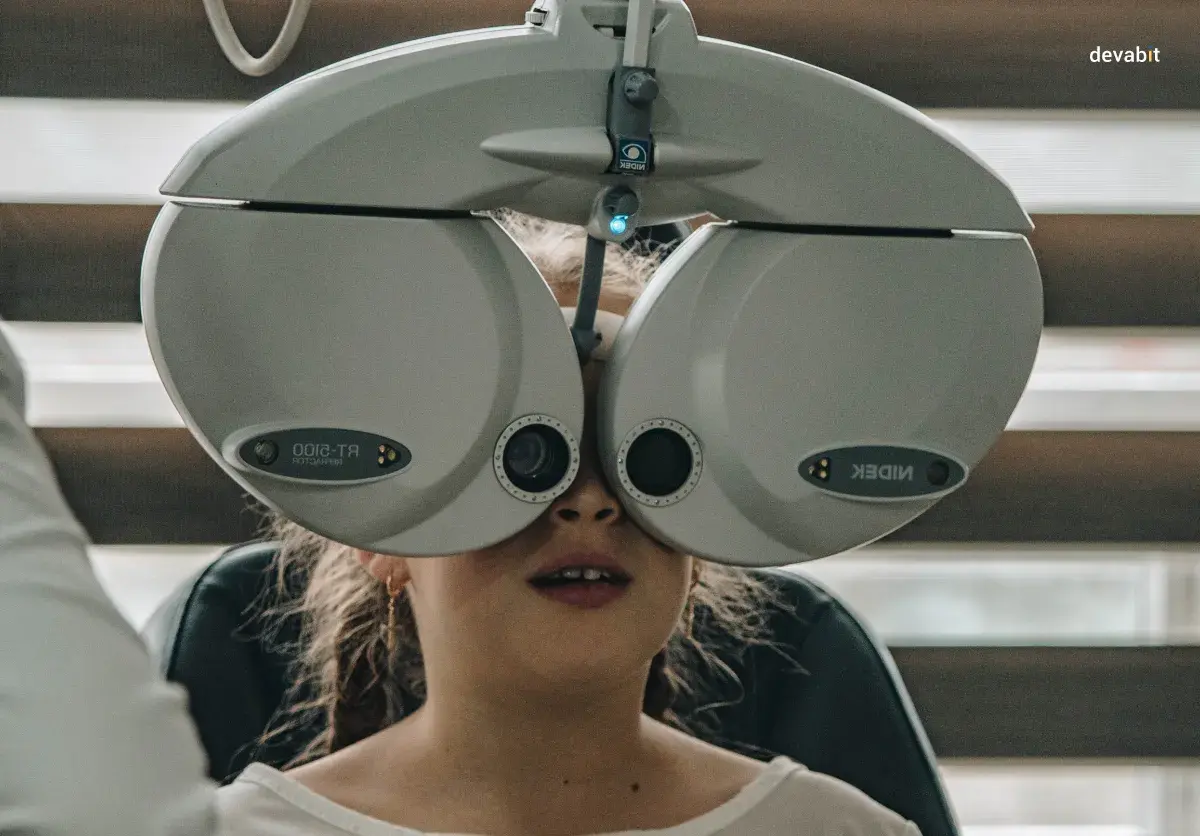
Telehealth vs. Telemedicine: On the Bottom Line
At the end of the day, the eternal controversy of 'telehealth vs. telemedicine' can be easily resolved. Since these concepts demonstrate similar qualities, the choice depends only on the scope of the solution and services you want to get. Thus, for routine monitoring, effortless access to health advice, and non-urgent medical consultations, telehealth stands out as a more accessible and cost-effective solution. It caters to a broader audience and addresses the need for regular, more straightforward healthcare support. However, for direct clinical consultations, specific diagnoses, and comprehensive treatment plans requiring a higher level of medical expertise, telemedicine is the preferred choice. Its focus on direct clinical services ensures more personalized and in-depth care, especially for more complex health concerns.
After all is said and done, the key to selecting the appropriate digital healthcare solution lies in a thorough understanding of your individual healthcare requirements. Since the healthcare industry continues to embrace technological advancements, users should carefully assess their needs to choose the most fitting solution. By acknowledging the differences between telehealth and telemedicine and understanding the various scenarios where each excels, individuals can make informed decisions, ensuring their healthcare needs are met efficiently.
At devabit, we understand that every solution has its unique challenges and requirements. Whether you are looking to build a telemedicine or telemedicine solution, we have got you covered. Just drop us a line below, and let us get started together.
Recent Publications
Don't miss out! Click here to stay in touch.
Discover More

Relevant Articles View all categories
View all categories CONNECT WITH US WE’RE READY
TO TALK OPPORTUNITIES
THANK YOU! WE RECEIVED YOUR MESSAGE.
Sorry
something went wrong



